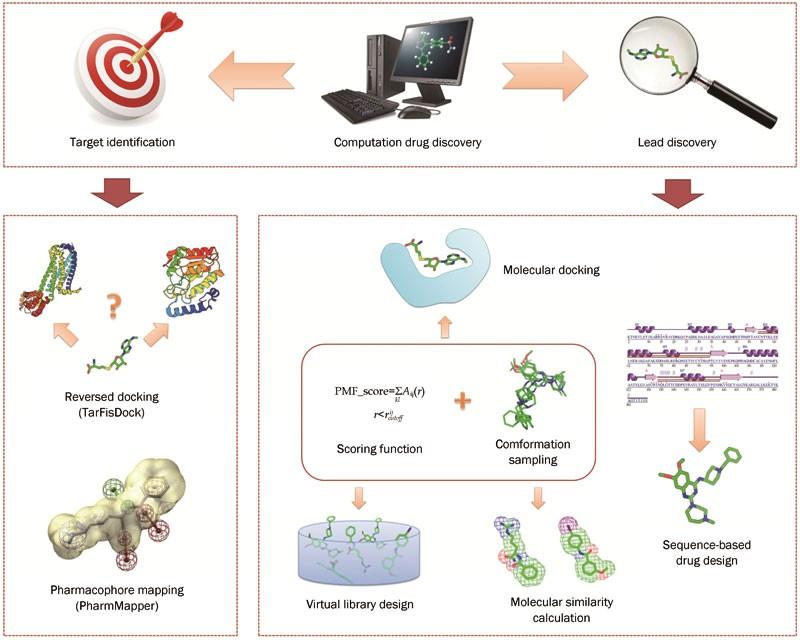Is AI Revolutionizing Pharma R&D or Just a Hype?
In an era where technological advancements are reshaping industries across the globe, few sectors stand at the crossroads of innovation and necessity like pharmaceuticals. With the advent of artificial intelligence, the conversation around its potential to revolutionize research and development in this field has gained significant momentum. But is this buzzworthy tech truly transforming the way drugs are discovered and brought to market, or is it merely a fleeting trend, generating excitement without substantial change?
In a recent YouTube discussion titled “Is AI Revolutionizing Pharma R&D or Just a Hype?”, Kim Branson, the Senior Vice President and Global Head of AI and Machine Learning at GSK, shares insights that dissect this pressing question. From his unexpected journey into molecular biology to the evolution of computational drug design, Branson sheds light on the interplay between AI and pharmaceutical research. This blog post will delve into the key highlights of the conversation, exploring how AI is being integrated into pharmaceutical R&D, the challenges still ahead, and whether the hype surrounding these technologies can translate into practical, life-saving innovations. Join us as we unpack the nuances of this critical dialogue, aimed at understanding the real impact of AI in a field where lives truly hang in the balance.
Exploring the Intersection of AI and Pharmaceutical Innovation

The integration of artificial intelligence into pharmaceutical research and development is poised to transform the industry dramatically. Pharmaceutical companies are leveraging machine learning and data analytics to streamline processes ranging from drug discovery to clinical trials. AI technologies can analyze vast datasets much more efficiently than traditional methods, uncovering patterns and insights that may not be immediately apparent to human researchers. For example, computational drug design is already yielding positive results by predicting molecular interactions and optimizing drug candidates before they enter the lab. This not only expedites the discovery process but also reduces the costs associated with late-stage trial failures.
Moreover, collaborations between AI-focused startups and established pharmaceutical giants foster an environment ripe for innovation. By employing algorithm-driven approaches, companies can enhance their ability to personalize medicine, targeting therapies to patient subpopulations more effectively. This shift towards precision medicine demands not only groundbreaking technology but also a deep understanding of biological complexities, as highlighted by pioneers in the field. The allure of understanding structural biology intertwined with computational strategies represents a synergy that may redefine success in drug development and healthcare outcomes.
Unveiling the Potential of Computational Drug Design

The journey into the realm of computational drug design is not just about programming and algorithms; it encapsulates a profound understanding of molecular interactions and biological systems. As Kim Branson, the Global Head of AI and Machine Learning at GSK, illustrates, his intrigue for this field burgeoned from a fusion of interests in molecular biology and computational methodologies. This synergy allows researchers to delve deeper into how compounds interact with biological targets, ultimately paving the way for innovative drug development. The evolution of technology has propelled this discipline forward, demonstrating that computational methods can indeed yield successful results, leading to the creation of marketable drugs. This was notably witnessed with the design of Relenza, a groundbreaking example of a drug birthed from a computational strategy.
Furthermore, the landscape of pharmaceutical research and development is experiencing a significant metamorphosis, with computational drug design at its forefront. The key advantages that enhance this approach include:
- Efficiency: Reduces the time needed for drug discovery by simulating interactions and optimizing compounds.
- Precision: Facilitates the design of targeted therapies with higher specificity for their biological targets.
- Cost-effectiveness: Lowers overall R&D costs by minimizing waste during the trial-and-error phase of drug development.
As more pharmaceuticals embrace these cutting-edge methods, we may finally witness the dismantling of traditional paradigms that have long governed drug discovery processes, opening doors to remarkable advancements in patient care.
Evaluating the Real-World Impact of AI in Pharma R&D

Recent advancements in artificial intelligence have sparked a significant paradigm shift in pharmaceutical research and development. Companies are increasingly harnessing AI to streamline their drug discovery processes, offering the promise of reducing costs and expediting timelines. Notably, AI-driven computational drug design has matured, allowing scientists to create and optimize drug candidates with unprecedented precision. This approach not only accelerates the identification of potential pharmaceuticals but also enhances the understanding of molecular interactions, a crucial component for successful drug development. By utilizing algorithms that analyze vast datasets, researchers can unveil complex biological relationships that were previously obscured by traditional methodologies.
Nevertheless, the real-world impact of AI in Pharma R&D is nuanced. While early adoption has shown promise, numerous factors contribute to the overall efficacy and reliability of these technologies. For instance, *data quality*, *algorithm transparency*, and *regulatory frameworks* can significantly influence AI’s effectiveness in a clinical setting. Industry experts highlight that the success of AI initiatives often hinges on the collaboration between IT specialists and domain experts in biology and chemistry. Furthermore, to better assess the evolving landscape, it’s essential to measure key performance indicators (KPIs) such as the reduction in research timelines, increased success rates of clinical trials, and cost savings achieved through AI implementations. Here’s a simplistic view of these KPIs:
| KPI | Traditional Method | With AI |
|---|---|---|
| Drug Discovery Time | 10-15 years | 5-7 years |
| Clinical Trial Success Rate | 11% | 20%+ |
| Cost per Drug | $2.6 billion | $1 billion estimated |
Navigating the Hype: Practical Recommendations for Integration

Integrating AI into pharmaceutical R&D requires a balanced approach that acknowledges both the potential benefits and the inherent limitations of the technology. Pharmaceutical companies should prioritize creating interdisciplinary teams, blending data scientists with domain experts in biology and chemistry. Such collaboration fosters a comprehensive understanding of both the data and the biological context, which is crucial for the development of predictive models. Investing in training programs for existing staff will also help to build an agile workforce capable of adapting to new technologies and methodologies. These initiatives can ensure that teams are not only equipped with AI tools but also knowledgeable about their application in drug discovery and development.
Moreover, companies should adopt a phased approach to implementation, starting with pilot projects that assess the feasibility and effectiveness of AI applications in specific areas of research. By utilizing AI for tasks such as molecular modeling or data analysis of clinical trials, firms can gather valuable insights without overcommitting resources. Establishing feedback loops from initial projects is essential to refine processes and validate assumptions. To further enhance the integration of AI, companies could consider forming partnerships with tech startups specializing in machine learning and AI to leverage their expertise and accelerate innovation. By fostering such collaborative ecosystems, pharma R&D can navigate the hype and realize tangible improvements in efficiency and outcomes.
Key Takeaways
As we wrap up our exploration of the thought-provoking discussion in the YouTube video, “Is AI Revolutionizing Pharma R&D or Just a Hype?”, it becomes clear that the intersection of artificial intelligence and pharmaceutical research is a complex and rapidly evolving landscape. Kim Branson’s insights shed light on a journey of discovery that began with a passion for molecular biology and blossomed into a deep appreciation for the power of computational methods in drug design.
Branson’s narrative not only highlights the historical context of computational drug design but also invites us to consider the broader implications of AI in the realm of pharmaceuticals. Are we on the brink of a revolution, or is this merely a passing trend? The answer may lie in our ability to merge innovation with ethics, data with insights, and excitement with practicality.
As we move forward, it’s essential to keep this dialogue alive. Whether you’re a seasoned researcher, a curious student, or simply an interested observer, your voice matters in shaping the future of pharma R&D. The potential of AI is vast, and so are the questions it raises. So, let’s continue to ponder: How can we harness this technology responsibly to enhance healthcare for all? After all, as Branson’s journey illustrates, the pursuit of knowledge is as much about understanding complexity as it is about embracing change.
Thank you for joining us on this exploration. Stay curious, keep questioning, and until next time, let’s engage in the conversation that bridges innovation and health.






